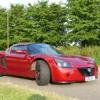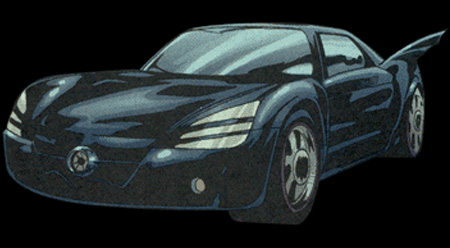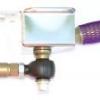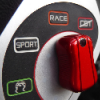
Which Arb?
#141

Posted 16 March 2013 - 09:40 AM
#142

Posted 16 March 2013 - 10:40 AM
Can I congratulate you with a well reasoned and clear argument. Even a numpty like me understood that.
Just to be clear I wasn't saying that I believed all of that. Just that for Scuffers that was a pleasant post. As a teacher I know its also important to praise badly behaved pupils when you get the opportunity.
Edited by P11 COV, 16 March 2013 - 10:41 AM.
#143

Posted 16 March 2013 - 11:18 AM
Can I congratulate you with a well reasoned and clear argument. Even a numpty like me understood that.
Just to be clear I wasn't saying that I believed all of that. Just that for Scuffers that was a pleasant post. As a teacher I know its also important to praise badly behaved pupils when you get the opportunity.
Good point.
#144

Posted 16 March 2013 - 11:46 AM
With respect, that just makes it worse...
Simon, it is not always about racing or fastest lap times.
The CF set up I drove on JGs car was lovely and is a great solution on a road car or those not so serious about tracking. If you are looking to focus on track stuff, the traditional route of stiffening the chassis through spring rates is the way forward IMHO.
I am totally unbiased on this subject BTW.
why in gods name do you need an (rear) ARB on a road car in the first place (you could actually argue the same for the front one, hence why the std item is so weedy)
Look, somebody needs to explain WHY you need a rear ARB on one in the first place.
I am the first person to admit running a (relatively) stiff ARB on a road car would be less than ideal, as all that will happen is you get bump-loads transferred across the car (why do you think we have independent suspension to start with?).
to then argue that a rear one is for road use is somewhat perverse? seems to me it's more about 'please come and spend some money with us' to me.
I (as have others) tried to run rear ARB's on track-race cars, and whilst it's not a black and white issue, to get one that's stiff enough to have any real effect is hard to start with, and once you are at that point, it's actually pretty unpleasant.
two main issues, as it loads up the loaded wheel, it unloads the other one, to the point that you now have zero grip/traction on the inside wheel, and as we all know (or dam well should), two tyres on the ground will always grip better than one.
second problem is that once you in a corner and the suspension had reached it steady state (relatively), if you then hit an bump with the inside wheel (like the apex kerb), that load is suddenly transferred across to the loaded wheel, which if it;s at anything like it's grip limit, is going to upset it, at which point, your going sideways, very suddenly.
Now, I agree, most purpose built race cars have rear ARB's, but please remember the Elise/VX platform was not designed like this, it's a road car with all the compromises that brings, like high COG etc.
Lastly, from what I have seen of a lot of rear ARB setups, they seem to all rely very much on bracing againstthe rear subframe, well, to my mind these are wobbly enough as they are, adding additional torsional loads to it is not going to help it's case, also a lot seem to use the top read wishbone to attach to, bad idea, as the only link this has to the uprights is the two plinth bolts, that are not designed/orientated to take vertical loads (and are fragile enough already - seen way too many fail on road/trackday cars when people do not keep a check on them).
in summary, uprating the front ARB to improve it;s track manners/performance is a no-brainer, there are several on the market, and broadly speaking, one makes 7/8" or 1" etc. bar will be very similar (in stiffness) to another.
Personally, for a road car and occasional trackday, a 7/8" one is probably sufficiently stiff to help without any real road car downsides.
Also, please remember that an ARB is very much a tuning device, and should not really be looked at as a substitute for springs/dampers, they all have to work together along with the tyres.
Ok, I’ll try to explain it to you...
Initially, this applies to any car and then gets more specific when we get to FWD, RWD, AWD.
Start with the tyres as every bit of adjustment and tuning is designed to maximise the grip from the tyres and achieve a balanced amount of grip from the front and back tyres. With a race car its ALL about the tyres – with a road car you have other considerations (eg comfort...)
Tyres are load sensitive. When you increase the vertical load they can provide more grip. However this effect is not proportional to the load – therefore this means that the outer wheel in a corner gains grip but more slowly than the inner wheel loses it. So a point is reached for a given mass accelerating round a corner of a given radius there is a point at which the tyres have reached their grip limit.
We therefore need to do 2 things;
- Make sure the car is well balanced (ie one end doesn’t run out of grip before the other) which is generally called oversteer or understeer.
- Minimise any factors that reduce the ability of the tyre to develop its maximum theoretical grip.
Kinematics – eg roll centres etc. Huge subject. Most common way of influencing on an unmodified chassis is usually ride height, rake, track bump steer kits etc. Vital consideration and unless we are prepared to get very technical and nasty with the chassis we generally leave ourselves in the hands of the guys at the factory that designed it.
Corner weights and centre of gravity – this determines the amount of load that is transferred between the tyre contact patches during longitudinal and/or lateral acceleration. Ideally we want a low CofG and low mass equally distributed between the tyre contact patches.
Track and wheelbase – these have a direct bearing on the amount of load that is transferred during lat/long acceleration.
Given these factors we know how much weight is transferred in a steady state corner. Springs, ARBs and dampers determine help to determine how/how quickly it is transferred between the tyre contact patches.
The earliest cars had springs but no ARBs or dampers. We need springs for obvious reasons – not just for comfort but a solid chassis transmits instantaneous load variations into the tyre contact patches and sets up crazy oscillations.
So we need springs to introduce some compliance and slow down the rate of load transfer. (in very general terms) low rates will give more grip/high rates more responsiveness. Therefore we need to find the right compromise (to suit the application – ie road, trackday, race).
The compromise is;
- We want a higher spring rate to control the sprung mass in cornering (body roll) and pitch (braking/accelerating) otherwise we get excessive body movement and the problems that go with it (eg car feels unresponsive and lazy etc)
- We want a lower spring rate to enable the unsprung mass (ie wheel/brakes/suspension parts) to follow the road surface and minimise fluctuations in tyre contact patch loads.
So the ARB allows us to add rate in roll but keep it lower in ride – its a tool to help us get the best of both worlds. Too stiff and the ARB has negative effects (ref Scuffers + other issues), too soft and you haven’t made full advantage. This applies to the front and the back of cars. As I have said in earlier posts, we have developed (thru calcs and much datalogged and driver feedback testing) good rules of thumb for speccing ARB rates for RWD, FWD and AWD that would be suitable for road through to race use.
Therefore (and try to get this Scuffers) the purpose of the ARBs is to help us with this compromise - hence the front and rear bar. Funny thing, the Evora has a front and a rear ARB (as do most road cars let alone race cars) but perhaps Lotus did this to make money out of people that didnt know better, eh Scuffers?
The other neat thing about an ARB is that you can soften or stiffen bars to change the grip balance between the front and back of the car for over/understeer characteristics.
The next thing is dampers – they are a vital tuning tool because the forces they exert are speed dependent rather than displacement dependent like the springs and ARBs. The chassis movements we have referred to above needing high(er) spring rates are low velocity and the wheel/suspension movements referred to above needing low(er) spring rates are higher speed.
So we can start to think about damper valving to work in these different (speed) areas.
We haven’t even got onto tyre pressure, camber, toe... and then we start to manipulate these parameters to control tyre temps as well...
I’ll stop in a minute...
What I want to get over is that optimising the parameters that control tyre contact patch loads is fundamental to vehicle dynamics (my profession) and I wouldn’t dismiss any set up (whether they are in commercial competition with me or not) that has been derived to achieve this (e.g. Chris and his work).
Road cars don’t need to optimise these parameters so much as the tyre isn’t normally driven anywhere need the tyre grip limits and other factors matter much more – as we approach the limits (trackday and racing) we need to really nurture the tyre contact patch for the loads applied, the rate of load transfer and load fluctuations.
Finally, lap times count when we race. We aren’t racing here. if we ever do compete against eachother then it wont be about ARBs it will be about optimising the billion available parameters for that car, on that track on that day for that driver.
I hope this makes sense – I don’t intend to patronise those that know lots about race car dynamics or look like a pillock to those that aren’t at all interested.
Cheers
Simon
#145

Posted 16 March 2013 - 11:56 AM
#146

Posted 16 March 2013 - 03:40 PM
did you really say that?Im not sure its fair to argue that an anti roll bar unloading the inside wheel is a reason why you shouldnt use one on the rear.
Why is this downside outweighed on the front by improved control of roll, but not at the rear?
There is vx coming close to beating hill climb records with no arb at all.
Some hints...
1) which wheels drive the car?
2) which wheels have the majority of weight on them?
3) when push comes to shove, which end let's go first in high-G corners?
#147

Posted 16 March 2013 - 03:53 PM
well, for starters, try not to be so patronising, if you really think I don't understand this stuff, I suggest you might just want to take a few steps back and think again.Ok, I’ll try to explain it to you...
Initially, this applies to any car and then gets more specific when we get to FWD, RWD, AWD.
Start with the tyres as every bit of adjustment and tuning is designed to maximise the grip from the tyres and achieve a balanced amount of grip from the front and back tyres. With a race car its ALL about the tyres – with a road car you have other considerations (eg comfort...)
Tyres are load sensitive. When you increase the vertical load they can provide more grip. However this effect is not proportional to the load – therefore this means that the outer wheel in a corner gains grip but more slowly than the inner wheel loses it. So a point is reached for a given mass accelerating round a corner of a given radius there is a point at which the tyres have reached their grip limit.
We therefore need to do 2 things;So if we look at some of the factors that affect tyre loads;
- Make sure the car is well balanced (ie one end doesn’t run out of grip before the other) which is generally called oversteer or understeer.
- Minimise any factors that reduce the ability of the tyre to develop its maximum theoretical grip.
Kinematics – eg roll centres etc. Huge subject. Most common way of influencing on an unmodified chassis is usually ride height, rake, track bump steer kits etc. Vital consideration and unless we are prepared to get very technical and nasty with the chassis we generally leave ourselves in the hands of the guys at the factory that designed it.
Corner weights and centre of gravity – this determines the amount of load that is transferred between the tyre contact patches during longitudinal and/or lateral acceleration. Ideally we want a low CofG and low mass equally distributed between the tyre contact patches.
Track and wheelbase – these have a direct bearing on the amount of load that is transferred during lat/long acceleration.
Given these factors we know how much weight is transferred in a steady state corner. Springs, ARBs and dampers determine help to determine how/how quickly it is transferred between the tyre contact patches.
The earliest cars had springs but no ARBs or dampers. We need springs for obvious reasons – not just for comfort but a solid chassis transmits instantaneous load variations into the tyre contact patches and sets up crazy oscillations.
So we need springs to introduce some compliance and slow down the rate of load transfer. (in very general terms) low rates will give more grip/high rates more responsiveness. Therefore we need to find the right compromise (to suit the application – ie road, trackday, race).
The compromise is;So we want the car stiff(er) to control roll and soft(er) for getting grip. “A” solution is a third spring that only acts when the car goes into roll and plays little part when the car is just going along (ie the ARB!).
- We want a higher spring rate to control the sprung mass in cornering (body roll) and pitch (braking/accelerating) otherwise we get excessive body movement and the problems that go with it (eg car feels unresponsive and lazy etc)
- We want a lower spring rate to enable the unsprung mass (ie wheel/brakes/suspension parts) to follow the road surface and minimise fluctuations in tyre contact patch loads.
So the ARB allows us to add rate in roll but keep it lower in ride – its a tool to help us get the best of both worlds. Too stiff and the ARB has negative effects (ref Scuffers + other issues), too soft and you haven’t made full advantage. This applies to the front and the back of cars. As I have said in earlier posts, we have developed (thru calcs and much datalogged and driver feedback testing) good rules of thumb for speccing ARB rates for RWD, FWD and AWD that would be suitable for road through to race use.
Therefore (and try to get this Scuffers) the purpose of the ARBs is to help us with this compromise - hence the front and rear bar. Funny thing, the Evora has a front and a rear ARB (as do most road cars let alone race cars) but perhaps Lotus did this to make money out of people that didnt know better, eh Scuffers?
The other neat thing about an ARB is that you can soften or stiffen bars to change the grip balance between the front and back of the car for over/understeer characteristics.
The next thing is dampers – they are a vital tuning tool because the forces they exert are speed dependent rather than displacement dependent like the springs and ARBs. The chassis movements we have referred to above needing high(er) spring rates are low velocity and the wheel/suspension movements referred to above needing low(er) spring rates are higher speed.
So we can start to think about damper valving to work in these different (speed) areas.
We haven’t even got onto tyre pressure, camber, toe... and then we start to manipulate these parameters to control tyre temps as well...
I’ll stop in a minute...
What I want to get over is that optimising the parameters that control tyre contact patch loads is fundamental to vehicle dynamics (my profession) and I wouldn’t dismiss any set up (whether they are in commercial competition with me or not) that has been derived to achieve this (e.g. Chris and his work).
Road cars don’t need to optimise these parameters so much as the tyre isn’t normally driven anywhere need the tyre grip limits and other factors matter much more – as we approach the limits (trackday and racing) we need to really nurture the tyre contact patch for the loads applied, the rate of load transfer and load fluctuations.
Finally, lap times count when we race. We aren’t racing here. if we ever do compete against eachother then it wont be about ARBs it will be about optimising the billion available parameters for that car, on that track on that day for that driver.
I hope this makes sense – I don’t intend to patronise those that know lots about race car dynamics or look like a pillock to those that aren’t at all interested.
Cheers
Simon
and your point about the Evora is irrelevant, quite apart from it being a completely different car, it;s got some 500+ more Kg's to deal with, some of which is very high up at the rear (it's called an engine).
Look, I don't really car what you do professionally, buy if you think a rear ARB's the way forward, then please show us all, setup a car with one (and everything else) and demonstrate it, as in go chase some laptimes.
Seriously, the only point in doing this stuff is to make the cars go faster, so to try and argue it's not about lap times is just laughable, for a road car, there really is zero point in this stuff, so far all I see is rhetoric, and people saying it feels nice, which let's face it, is pretty meaningless.
Having just finished the base setup for Mikes car, assuming we get some dry track tomorrow, I will be interested to see what Mikes comments are, having driven it down the road just now, it actually feels pretty together to me, and even on very high (by VX standards) spring rates, it's anything but harsh.
#148

Posted 16 March 2013 - 05:08 PM
well, for starters, try not to be so patronising, if you really think I don't understand this stuff, I suggest you might just want to take a few steps back and think again.
Ok, I’ll try to explain it to you...
Initially, this applies to any car and then gets more specific when we get to FWD, RWD, AWD.
Start with the tyres as every bit of adjustment and tuning is designed to maximise the grip from the tyres and achieve a balanced amount of grip from the front and back tyres. With a race car its ALL about the tyres – with a road car you have other considerations (eg comfort...)
Tyres are load sensitive. When you increase the vertical load they can provide more grip. However this effect is not proportional to the load – therefore this means that the outer wheel in a corner gains grip but more slowly than the inner wheel loses it. So a point is reached for a given mass accelerating round a corner of a given radius there is a point at which the tyres have reached their grip limit.
We therefore need to do 2 things;So if we look at some of the factors that affect tyre loads;
- Make sure the car is well balanced (ie one end doesn’t run out of grip before the other) which is generally called oversteer or understeer.
- Minimise any factors that reduce the ability of the tyre to develop its maximum theoretical grip.
Kinematics – eg roll centres etc. Huge subject. Most common way of influencing on an unmodified chassis is usually ride height, rake, track bump steer kits etc. Vital consideration and unless we are prepared to get very technical and nasty with the chassis we generally leave ourselves in the hands of the guys at the factory that designed it.
Corner weights and centre of gravity – this determines the amount of load that is transferred between the tyre contact patches during longitudinal and/or lateral acceleration. Ideally we want a low CofG and low mass equally distributed between the tyre contact patches.
Track and wheelbase – these have a direct bearing on the amount of load that is transferred during lat/long acceleration.
Given these factors we know how much weight is transferred in a steady state corner. Springs, ARBs and dampers determine help to determine how/how quickly it is transferred between the tyre contact patches.
The earliest cars had springs but no ARBs or dampers. We need springs for obvious reasons – not just for comfort but a solid chassis transmits instantaneous load variations into the tyre contact patches and sets up crazy oscillations.
So we need springs to introduce some compliance and slow down the rate of load transfer. (in very general terms) low rates will give more grip/high rates more responsiveness. Therefore we need to find the right compromise (to suit the application – ie road, trackday, race).
The compromise is;So we want the car stiff(er) to control roll and soft(er) for getting grip. “A” solution is a third spring that only acts when the car goes into roll and plays little part when the car is just going along (ie the ARB!).
- We want a higher spring rate to control the sprung mass in cornering (body roll) and pitch (braking/accelerating) otherwise we get excessive body movement and the problems that go with it (eg car feels unresponsive and lazy etc)
- We want a lower spring rate to enable the unsprung mass (ie wheel/brakes/suspension parts) to follow the road surface and minimise fluctuations in tyre contact patch loads.
So the ARB allows us to add rate in roll but keep it lower in ride – its a tool to help us get the best of both worlds. Too stiff and the ARB has negative effects (ref Scuffers + other issues), too soft and you haven’t made full advantage. This applies to the front and the back of cars. As I have said in earlier posts, we have developed (thru calcs and much datalogged and driver feedback testing) good rules of thumb for speccing ARB rates for RWD, FWD and AWD that would be suitable for road through to race use.
Therefore (and try to get this Scuffers) the purpose of the ARBs is to help us with this compromise - hence the front and rear bar. Funny thing, the Evora has a front and a rear ARB (as do most road cars let alone race cars) but perhaps Lotus did this to make money out of people that didnt know better, eh Scuffers?
The other neat thing about an ARB is that you can soften or stiffen bars to change the grip balance between the front and back of the car for over/understeer characteristics.
The next thing is dampers – they are a vital tuning tool because the forces they exert are speed dependent rather than displacement dependent like the springs and ARBs. The chassis movements we have referred to above needing high(er) spring rates are low velocity and the wheel/suspension movements referred to above needing low(er) spring rates are higher speed.
So we can start to think about damper valving to work in these different (speed) areas.
We haven’t even got onto tyre pressure, camber, toe... and then we start to manipulate these parameters to control tyre temps as well...
I’ll stop in a minute...
What I want to get over is that optimising the parameters that control tyre contact patch loads is fundamental to vehicle dynamics (my profession) and I wouldn’t dismiss any set up (whether they are in commercial competition with me or not) that has been derived to achieve this (e.g. Chris and his work).
Road cars don’t need to optimise these parameters so much as the tyre isn’t normally driven anywhere need the tyre grip limits and other factors matter much more – as we approach the limits (trackday and racing) we need to really nurture the tyre contact patch for the loads applied, the rate of load transfer and load fluctuations.
Finally, lap times count when we race. We aren’t racing here. if we ever do compete against eachother then it wont be about ARBs it will be about optimising the billion available parameters for that car, on that track on that day for that driver.
I hope this makes sense – I don’t intend to patronise those that know lots about race car dynamics or look like a pillock to those that aren’t at all interested.
Cheers
Simon
and your point about the Evora is irrelevant, quite apart from it being a completely different car, it;s got some 500+ more Kg's to deal with, some of which is very high up at the rear (it's called an engine).
Look, I don't really car what you do professionally, buy if you think a rear ARB's the way forward, then please show us all, setup a car with one (and everything else) and demonstrate it, as in go chase some laptimes.
Seriously, the only point in doing this stuff is to make the cars go faster, so to try and argue it's not about lap times is just laughable, for a road car, there really is zero point in this stuff, so far all I see is rhetoric, and people saying it feels nice, which let's face it, is pretty meaningless.
Having just finished the base setup for Mikes car, assuming we get some dry track tomorrow, I will be interested to see what Mikes comments are, having driven it down the road just now, it actually feels pretty together to me, and even on very high (by VX standards) spring rates, it's anything but harsh.
Perhaps you gave that impression yourself by your own post on rear ARB's? especially as many of the assumptions you made about them were not correct.
further, your detail of why the rear ARB can have such bad traits could only be made if you had fitted one poorly designed (if at all) for the application.
If you think the technical post above is incorrect or misleading in any way then please point out what and why?
#149

Posted 16 March 2013 - 05:49 PM
Perhaps you should either put up or shut up?Perhaps you gave that impression yourself by your own post on rear ARB's? especially as many of the assumptions you made about them were not correct.
further, your detail of why the rear ARB can have such bad traits could only be made if you had fitted one poorly designed (if at all) for the application.
If you think the technical post above is incorrect or misleading in any way then please point out what and why?
Yet another expert with zero to show for it?
Like i said, Show us the cars you have engineered and their results....
(Like i do all the time in public open competition)
#150

Posted 16 March 2013 - 05:51 PM
#151

Posted 16 March 2013 - 06:00 PM
#152

Posted 16 March 2013 - 06:11 PM

#153

Posted 16 March 2013 - 06:31 PM
Perhaps you should either put up or shut up?
Perhaps you gave that impression yourself by your own post on rear ARB's? especially as many of the assumptions you made about them were not correct.
further, your detail of why the rear ARB can have such bad traits could only be made if you had fitted one poorly designed (if at all) for the application.
If you think the technical post above is incorrect or misleading in any way then please point out what and why?
Yet another expert with zero to show for it?
Like i said, Show us the cars you have engineered and their results....
(Like i do all the time in public open competition)
I have never claimed to be an expert.
But you do!
again, if you think the technical post mentioned above is incorrect or misleading in any way then please point out what and why?
#154

Posted 16 March 2013 - 06:35 PM
Some comments,
1 Exile v6 Is a completely different proposition, once again, It has a heavy v6 engine mounted In a different rear end quite high up.
2 All the .gt3 cars had rear arb's, The one on the red bull painted car is no different.
3 Mr newly is an aero man, Not a kinematics engineer.
Not all of them did... I took it off on the one I drove. Gave tended to run it in the soft (on its softest setting IIRC) but not in the wet but he has a very different driving style to me.
#155

Posted 16 March 2013 - 06:40 PM
Just so I can get this clear in my own mind, the only argument here now, is really over the use of a rear ARB?
We're agreed that the stock front anti-roll bar does so little it's almost useless (as demonstrated in your video) and that an EP adjustable anti-roll bar is okay be that the 1" or 7/8" version? Therefore adjustable front ARB's, as a concept, are fine. Be that the EP 5 position type, or the more granular (and much easier to adjust) Chris R preferred Pillbeam or the Cornering Force blade adjustable ARB's?
So, the real problem here, is that a rear ARB is inherently wrong on this chassis, even with a suspension package to suit and play to it's strengths/weaknesses? And therefore Lotus were just plain wrong to take the same approach with the Exige V6 with softer springs, firmer damping and a rear ARB? Clearly Adrian Newey, that well known adder of pointless things, was also wrong to fit one to his Exige GT-3 car?
Nobody is suggesting just willy nilly fitting a bit of steel bar with unknown torsional properties to the link the rear wheels in some random way. We're also not talking about a 10000Nm solid rear ARB here. It comes as a matched package with spring and damping rates to suit. As I understood it, it's effectively just adding say 100lb (can't remember what it is in reality) to the spring rates at the onset of roll and is effectively doing the same as running 750lb springs (again that's an example and not an exact number before you shoot me) but, without the drawbacks of those kind of spring rates in respect of traction and importantly to me, given the fact that it's still a road car, ride compliance. I'm certainly not attuned to the car enough to isolate the individual effect (positive or negative) of the rear ARB over and above the springs, dampers and tyres. You may well be! What I do know is, as a whole it feels right to me. It also happily tells me when it's thinking about letting go (much more so than the plain NTR's and R888's ever did) and doesn't lurch into snap oversteer with no warning.
Have I got any empirical evidence to support any of that? No, I haven't. Walshy didn't get out of it, a quivering wreck, the last time he took it through the high speed bend at untouchable speeds for the rest of us, on my last Carlimits day, if that helps? I also safely went through it a fair amount faster than any of the 3 Elises that were there that same day but I'm a different driver, in a different car and I'd done it before, so not fair to compare.
Is it subjective? Yes, so shoot me.
Am I biased? Quite probably but I'm also infamous for being honest about some of the mistakes/wrong turns I've made with this car.
Is it for everyone (irrespective of cost)? Possibly not but I wouldn't shoot someone down in flames for thinking about it and assessing it for themselves.
Would it make for a Championship winning race car? No idea but I'm not building race car or planning to do so at any time in the future.
Simon R, during initial development, had a professional driver driving the development car on a track (for some consistency/repeatability) and did extensive logging of the performance of the suspension and car as a whole. So I guess there's some proper data available, if he feels the need to broadcast it.
Like I've said, I'm not a race driver like you. Nor do I claim to be a chassis engineer. Any times I might give you for the trackday laps I've done (assuming I could even do consistent laps without traffic of different capabilities), are absolutely pointless. I can't even compare trackdays on the same track pre and post ARB's, for the same reasons, plus differing power levels and weather conditions and even the particular mood I might be in on the day. Christ I can't even compare a morning session to an afternoon session due to how "up for it", or not, I am at the time. Just like comparing mine to SteveA's CF equipped VXT would be pointless. They'd only support your assertion that it's a useless setup, as I'm sure any time sheets I had wouldn't be within the same minute as your's, even if the cars the comparisons were recorded in were vaguely similar in setup.
P.S. the rear anti roll bar isn't connected to the subframe in the Cornering Force setup, so no flaccid subframe issues here, thank you.
If you ever get the opportunity, sit next to me in a car with rear ARB and I'll shown you the dynamic implications of it. Having tried several rear ARB setups including factory GT3 and the CF setup I have found the effect the same every time. OK, its the limit handling that I'm talking about but there is a pronounced effect that I personally find undesirable. This effect is the rear tyres break traction before they are fully loaded.
#156

Posted 16 March 2013 - 06:47 PM
Just so I can get this clear in my own mind, the only argument here now, is really over the use of a rear ARB?
We're agreed that the stock front anti-roll bar does so little it's almost useless (as demonstrated in your video) and that an EP adjustable anti-roll bar is okay be that the 1" or 7/8" version? Therefore adjustable front ARB's, as a concept, are fine. Be that the EP 5 position type, or the more granular (and much easier to adjust) Chris R preferred Pillbeam or the Cornering Force blade adjustable ARB's?
So, the real problem here, is that a rear ARB is inherently wrong on this chassis, even with a suspension package to suit and play to it's strengths/weaknesses? And therefore Lotus were just plain wrong to take the same approach with the Exige V6 with softer springs, firmer damping and a rear ARB? Clearly Adrian Newey, that well known adder of pointless things, was also wrong to fit one to his Exige GT-3 car?
Nobody is suggesting just willy nilly fitting a bit of steel bar with unknown torsional properties to the link the rear wheels in some random way. We're also not talking about a 10000Nm solid rear ARB here. It comes as a matched package with spring and damping rates to suit. As I understood it, it's effectively just adding say 100lb (can't remember what it is in reality) to the spring rates at the onset of roll and is effectively doing the same as running 750lb springs (again that's an example and not an exact number before you shoot me) but, without the drawbacks of those kind of spring rates in respect of traction and importantly to me, given the fact that it's still a road car, ride compliance. I'm certainly not attuned to the car enough to isolate the individual effect (positive or negative) of the rear ARB over and above the springs, dampers and tyres. You may well be! What I do know is, as a whole it feels right to me. It also happily tells me when it's thinking about letting go (much more so than the plain NTR's and R888's ever did) and doesn't lurch into snap oversteer with no warning.
Have I got any empirical evidence to support any of that? No, I haven't. Walshy didn't get out of it, a quivering wreck, the last time he took it through the high speed bend at untouchable speeds for the rest of us, on my last Carlimits day, if that helps? I also safely went through it a fair amount faster than any of the 3 Elises that were there that same day but I'm a different driver, in a different car and I'd done it before, so not fair to compare.
Is it subjective? Yes, so shoot me.
Am I biased? Quite probably but I'm also infamous for being honest about some of the mistakes/wrong turns I've made with this car.
Is it for everyone (irrespective of cost)? Possibly not but I wouldn't shoot someone down in flames for thinking about it and assessing it for themselves.
Would it make for a Championship winning race car? No idea but I'm not building race car or planning to do so at any time in the future.
Simon R, during initial development, had a professional driver driving the development car on a track (for some consistency/repeatability) and did extensive logging of the performance of the suspension and car as a whole. So I guess there's some proper data available, if he feels the need to broadcast it.
Like I've said, I'm not a race driver like you. Nor do I claim to be a chassis engineer. Any times I might give you for the trackday laps I've done (assuming I could even do consistent laps without traffic of different capabilities), are absolutely pointless. I can't even compare trackdays on the same track pre and post ARB's, for the same reasons, plus differing power levels and weather conditions and even the particular mood I might be in on the day. Christ I can't even compare a morning session to an afternoon session due to how "up for it", or not, I am at the time. Just like comparing mine to SteveA's CF equipped VXT would be pointless. They'd only support your assertion that it's a useless setup, as I'm sure any time sheets I had wouldn't be within the same minute as your's, even if the cars the comparisons were recorded in were vaguely similar in setup.
P.S. the rear anti roll bar isn't connected to the subframe in the Cornering Force setup, so no flaccid subframe issues here, thank you.
If you ever get the opportunity, sit next to me in a car with rear ARB and I'll shown you the dynamic implications of it. Having tried several rear ARB setups including factory GT3 and the CF setup I have found the effect the same every time. OK, its the limit handling that I'm talking about but there is a pronounced effect that I personally find undesirable. This effect is the rear tyres break traction before they are fully loaded.
This is fine Chris, but again there is a comparison with driving at limits which was not built into the road version.
If you want a full race setup that can be sorted as you well know from your discussions with SimonR but many of the components will change including the rear ARB all the springs and Damper shims.
#157

Posted 16 March 2013 - 06:51 PM
#158

Posted 16 March 2013 - 07:08 PM
That's funny, on so many levels....
Come on, Own up, who came up with this ?
#159

Posted 16 March 2013 - 07:22 PM
#160

Posted 17 March 2013 - 08:55 AM
1 user(s) are reading this topic
0 members, 1 guests, 0 anonymous users

















